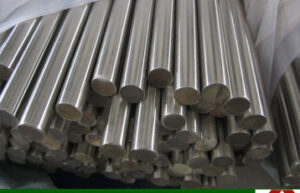Introduction
Stainless steel, a marvel of modern metallurgy, encompasses a diverse array of alloys, each tailored for specific applications. Among these, the formidable 410 and corrosion-resistant 316 stainless steels stand out. In this comprehensive article, we embark on a journey to dissect the disparities between 410 and 316 stainless steel, unraveling their composition, properties, applications, and the factors that make them unique in the vast stainless steel landscape.
1. Dueling Alloys: A Stainless Steel Showdown
 410 and 316 stainless steel, both stalwarts in the stainless steel family, offer distinct properties and capabilities. Comparing and contrasting these alloys provides valuable insights for material selection.
410 and 316 stainless steel, both stalwarts in the stainless steel family, offer distinct properties and capabilities. Comparing and contrasting these alloys provides valuable insights for material selection.
2. Unmasking 410 Stainless Steel: Composition and Attributes
The composition of 410 stainless steel comprises:
- Chromium (Cr): 11.5% – 13.5%
- Carbon (C): 0.08% – 0.15%
- Manganese (Mn): Up to 1.0%
- Silicon (Si): Up to 1.0%
- Phosphorus (P): Up to 0.04%
- Sulfur (S): Up to 0.03%
The attributes of 410 stainless steel contribute to its strength, corrosion resistance, and magnetic behavior.
3. Decoding 316 Stainless Steel: Composition and Features
316 stainless steel showcases a different composition:
- Chromium (Cr): 16.0% – 18.0%
- Nickel (Ni): 10.0% – 14.0%
- Molybdenum (Mo): 2.0% – 3.0%
- Carbon (C): Maximum 0.08%
- Manganese (Mn): Maximum 2.0%
- Silicon (Si): Maximum 1.0%
The presence of nickel and molybdenum grants 316 stainless steel superior corrosion resistance.
4. Mechanical Marvels: Strength and Toughness Comparison
410 stainless steel boasts higher strength and hardness compared to 316 stainless steel:
- 410: Hard and strong, suitable for applications requiring wear resistance.
- 316: Relatively softer with higher toughness, suitable for environments with corrosion concerns.
5. Corrosion Chronicles: Resisting the Elements
The corrosion resistance of 316 stainless steel surpasses that of 410 stainless steel:
- 316: Excelling in corrosive environments, particularly in the presence of chlorides.
- 410: Moderate corrosion resistance, suitable for less aggressive environments.
6. Heat Resistance: Navigating the Temperature Gradient
Both alloys exhibit heat resistance, but with differences:
- 410: Withstands moderate heat, often used in applications like automotive exhaust systems.
- 316: Maintains strength and corrosion resistance at elevated temperatures, making it suitable for high-temperature environments.
7. Application Odyssey: Where 410 and 316 Shine
Applications illuminate the strengths of each alloy:
- 410: Cutlery, blades, valves, and components requiring wear resistance.
- 316: Chemical processing, marine environments, medical devices, and food processing.
8. Factor of Fabrication: Welding, Forming, and Machining
Differences in fabrication characteristics impact alloy selection:
- 410: More prone to cracking during welding, requires careful execution.
- 316: Better welding characteristics, easier to form and machine.
9. Beyond the Surface: Aesthetic and Sanitary Considerations
316 stainless steel shines in applications requiring aesthetic and sanitary properties:
- 316: Smooth surface finish suitable for architectural and medical applications.
- 410: Often less suitable due to its magnetic behavior.
10. Expert Insights: Navigating Alloy Selection
 Experts offer guidance on alloy selection:
Experts offer guidance on alloy selection:
- Consider Environment: Evaluate the corrosion resistance required for the specific environment.
- Balance of Properties: Choose the alloy that best balances mechanical, corrosion, and other properties.
11. Real-World Cases: Applications and Success Stories
Real-world applications exemplify the choices between 410 and 316 stainless steel:
- 410: Automotive exhaust systems and industrial components.
- 316: Medical implants, marine equipment, and chemical processing equipment.
12. The Balance of Cost and Performance
Cost considerations play a role in alloy selection:
- 410: Generally more economical due to its lower nickel content.
- 316: Often more expensive due to the presence of nickel and molybdenum.
13. Frequently Asked Questions (FAQ)
Q1: Can 410 stainless steel be used in corrosive environments?
A1: While 410 stainless steel offers moderate corrosion resistance, it may not be the best choice for highly corrosive environments compared to alloys like 316.
Q2: Are 410 and 316 stainless steel equally strong?
A2: No, 410 stainless steel is stronger and harder than 316 stainless steel, making it suitable for applications requiring wear resistance.
Q3: Can 410 stainless steel be used in marine applications?
A3: 410 stainless steel may not be the ideal choice for marine applications due to its lower corrosion resistance compared to alloys like 316.
Q4: Which alloy is more suitable for applications requiring aesthetic finish?
A4: 316 stainless steel is often preferred for applications requiring a smooth and aesthetically pleasing surface finish.
Q5: What factors should be considered when choosing between 410 and 316 stainless steel?
A5: Consider the environment, corrosion resistance, mechanical properties, fabrication requirements, and cost when making the choice between the two alloys.
Conclusion
Comparing 410 and 316 stainless steel unveils the intricate interplay of composition, properties, and application demands. From high strength and wear resistance in 410 stainless steel to superior corrosion resistance and aesthetics in 316 stainless steel, each alloy brings its unique strengths to the table. By understanding their distinctions, engineers and designers can make informed decisions, aligning alloy selection with the demands of the environment and application. The stainless steel showdown of 410 versus 316 enriches the world of material choices, offering solutions tailored to the specific challenges and opportunities that each alloy presents.
